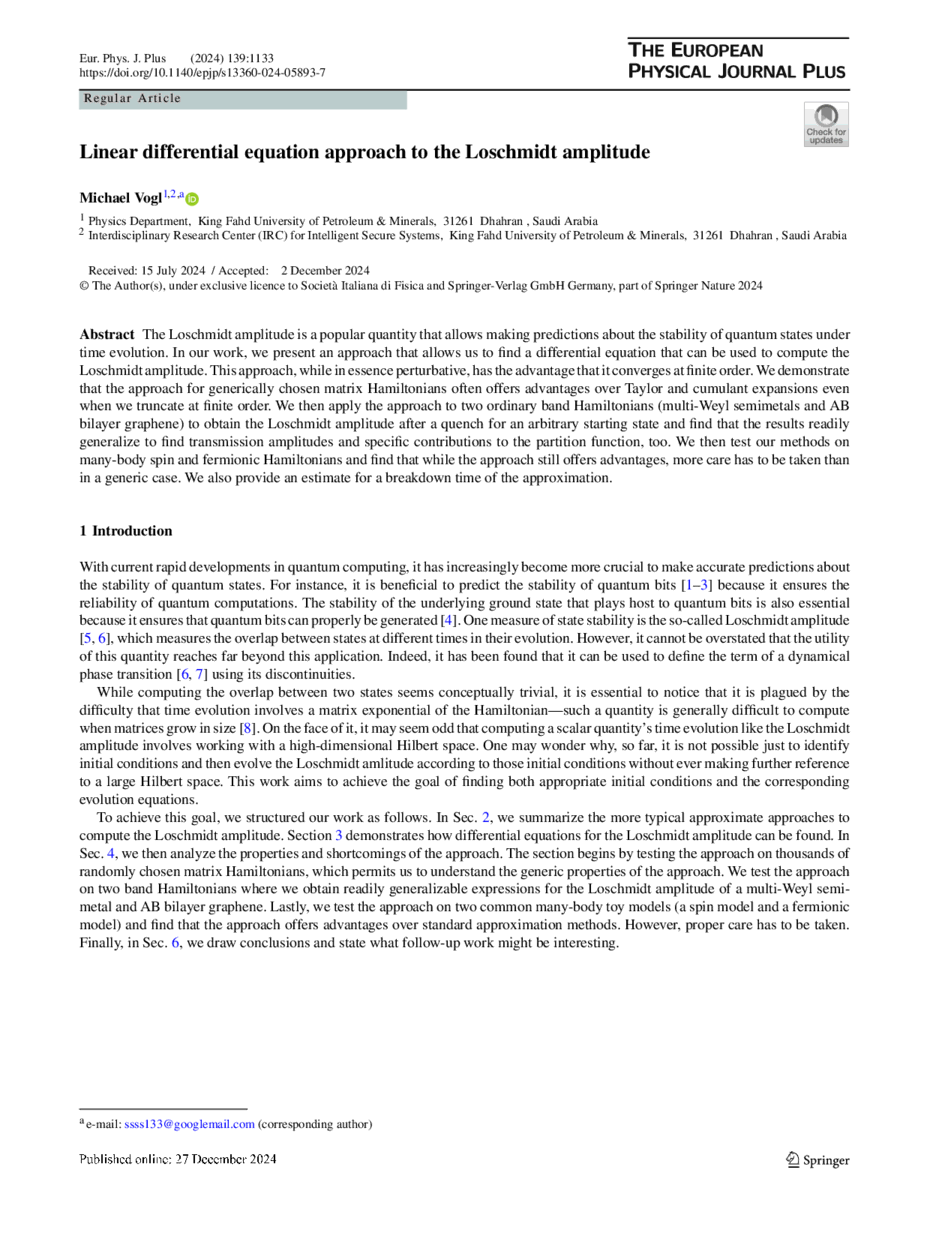https://doi.org/10.1140/epjp/s13360-024-05893-7
Regular Article
Linear differential equation approach to the Loschmidt amplitude
1
Physics Department, King Fahd University of Petroleum & Minerals, 31261, Dhahran, Saudi Arabia
2
Interdisciplinary Research Center (IRC) for Intelligent Secure Systems, King Fahd University of Petroleum & Minerals, 31261, Dhahran, Saudi Arabia
Received:
15
July
2024
Accepted:
2
December
2024
Published online:
27
December
2024
The Loschmidt amplitude is a popular quantity that allows making predictions about the stability of quantum states under time evolution. In our work, we present an approach that allows us to find a differential equation that can be used to compute the Loschmidt amplitude. This approach, while in essence perturbative, has the advantage that it converges at finite order. We demonstrate that the approach for generically chosen matrix Hamiltonians often offers advantages over Taylor and cumulant expansions even when we truncate at finite order. We then apply the approach to two ordinary band Hamiltonians (multi-Weyl semimetals and AB bilayer graphene) to obtain the Loschmidt amplitude after a quench for an arbitrary starting state and find that the results readily generalize to find transmission amplitudes and specific contributions to the partition function, too. We then test our methods on many-body spin and fermionic Hamiltonians and find that while the approach still offers advantages, more care has to be taken than in a generic case. We also provide an estimate for a breakdown time of the approximation.
Copyright comment Springer Nature or its licensor (e.g. a society or other partner) holds exclusive rights to this article under a publishing agreement with the author(s) or other rightsholder(s); author self-archiving of the accepted manuscript version of this article is solely governed by the terms of such publishing agreement and applicable law.
© The Author(s), under exclusive licence to Società Italiana di Fisica and Springer-Verlag GmbH Germany, part of Springer Nature 2024
Springer Nature or its licensor (e.g. a society or other partner) holds exclusive rights to this article under a publishing agreement with the author(s) or other rightsholder(s); author self-archiving of the accepted manuscript version of this article is solely governed by the terms of such publishing agreement and applicable law.





